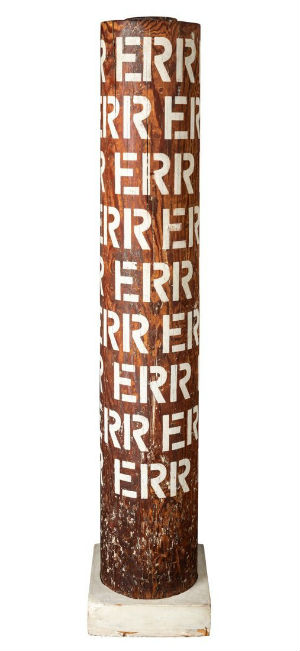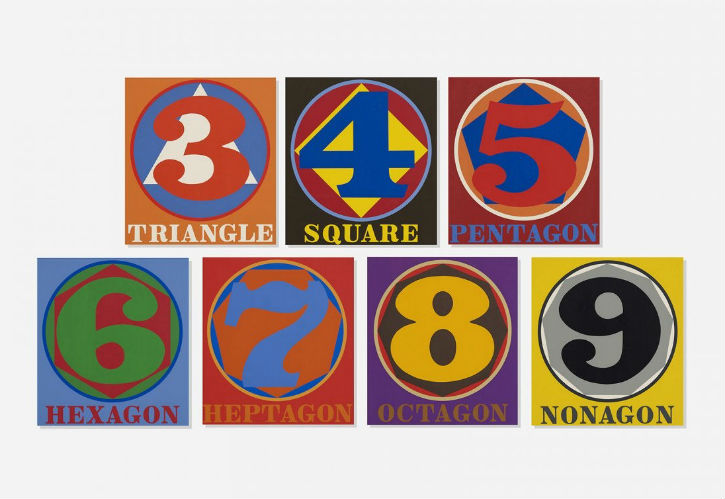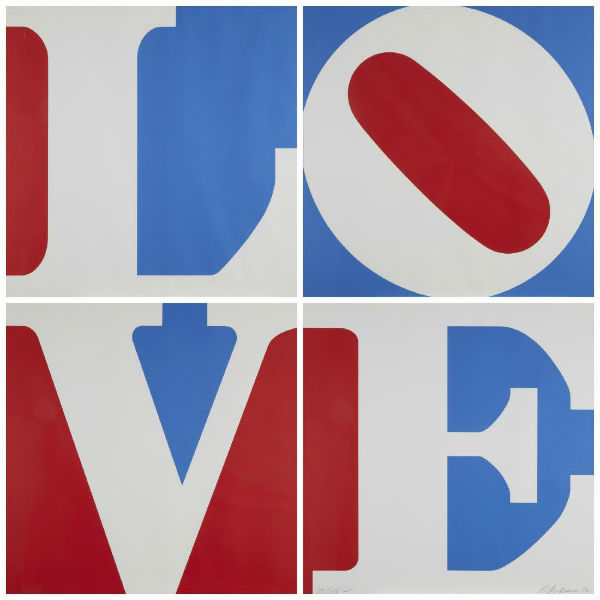
NEW YORK – Robert Indiana’s LOVE sculptures are his most well-recognized works, but perhaps that is a double-edged sword. Debuting in 1970 in sculpture form after various iterations in his paintings, his LOVE sculptures are in cities around the world in the original English spelling as well as Italian and Spanish versions, among others. The recognition that these works brought him afforded him artistic freedom, but some of his pegged him as a one-hit wonder. Interestingly, the late artist (1928-2018) has said that he found two of his other word sculptures, Food and Die, inherently more interesting than LOVE.
Born Robert Clark in 1928 in New Castle, Ind., he adopted his professional name in the 1950s in homage to his home state after completing his first major artwork, Stavrosis, a 19-foot-long painting. By the early 1960s he was a key part of the pop art movement that was growing in popularity. He was known for creating striking and bold artworks rich in color and commentary. His use of words in art was ahead of its time and offered up commentary on race and injustice, American identity and an exploration of what love was or wasn’t.

A 2013-14 exhibition at the Whitney Museum of American Art in New York City offered a look at the artist who unflaggingly explored what being an American meant and the realities of the American dream, while incorporating personal history and cultural references into his art. “Indiana’s exploration of identity, racial injustice, and the illusion and disillusion of love give emotional poignancy and symbolic complexity to our ever-evolving understanding of the ambiguities of American democracy and the plight of the individual in the modern world,” said curator Barbara Haskell in a press release for the exhibition.

The saying, “go big or go home,” fittingly sums up Indiana’s approach to the artistic process. In a 1974 interview, Indiana noted that subtle or delicate pieces held little attraction for him and that he was interested in the impact and presence of a piece, “It’s always been a matter of impact: the relationship of color to color and word to shape and word to complete piece – both the literal and the visual aspects,” he said.
According to the Robert Indiana website, the artist played a major part in the growth of assemblage art as well as hard-edge painting, which he pioneered as part of his verbal-visual vocabulary and pop art. The self-dubbed “American painter of signs,” Indiana was inspired by roadside vernacular, especially highway signs. “Indiana created a highly original body of work that explores American identity, personal history, and the power of abstraction and language, establishing an important legacy that resonates in the work of many contemporary artists who make the written word a central element of their oeuvre,” the website states.

Indiana’s painterly vocabulary was born when he came across 19th-century brass stencils, which he used to marry vividly painted numbers with eye-catching short words to create sculptures and various media, according to Heritage Auctions.
While Indiana might be his name, New York was the center of his art for several decades. He worked and lived in New York City and ran in the same art circles as Ellsworth Kelly, Robert Rauschenberg and Jasper Johns. The artists living in close proximity to each other and shared similar interests and visual vocabularies. By 1978, however, Indiana had tired of the New York art scene. Battered by a slew of negative reviews from art critics, he took off for Vinalhaven, Maine, where he lived out his life, putting down roots in a lovely old Victorian home. Stability was a privilege lacking in his childhood, which was marked by lean years after his father lost his job, the subsequent divorce of his parents, and frequent moves. By the time he turned 17, he had lived in more than 20 residences.

The art market is seldom stable, but buyers routinely show love for Indiana’s works, perhaps not to the extent that they do chart-topping artists like Warhol, Oldenburg and Johns, but Indiana’s artworks, both flat art and sculptures, seem not to be affected by the whims of the art market. His influence on contemporary art is undeniable, and the universality of his messages continues to resonate with buyers who LOVE his work, regardless of what critics may say.
# # #


